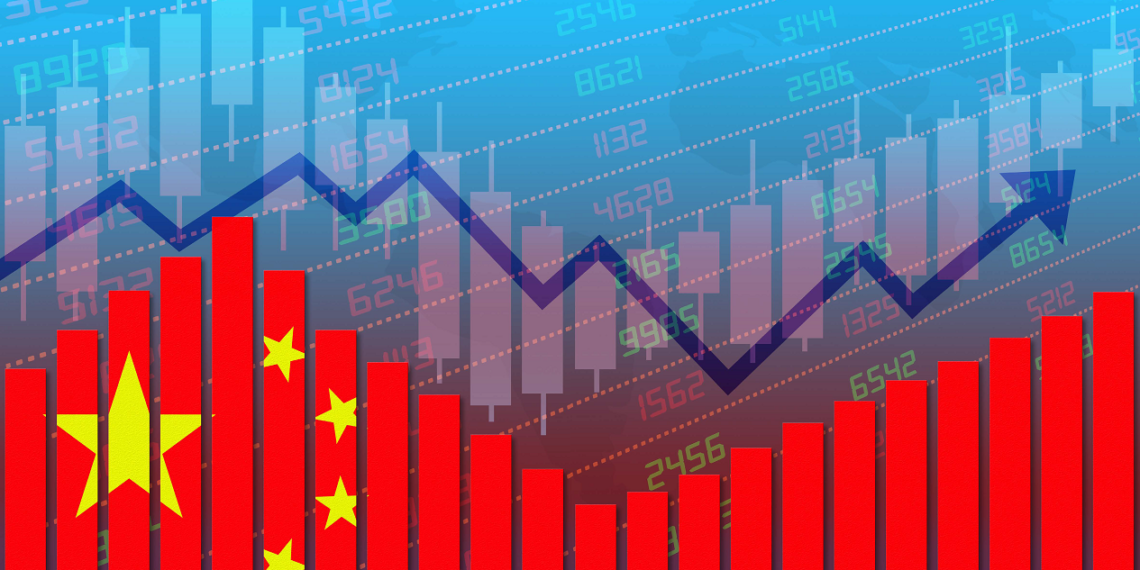Base metals prices fell last year, although nickel was an exception and followed its own path. By contrast, this year has seen aluminium, copper, tin, and zinc prices rallying, despite a mixed fundamental backdrop. While there is currently a clear disconnect between fundamentals and recent price action, we remain bullish for the year ahead for aluminium, copper, and tin. On the other hand, we are bearish for nickel and zinc, and neutral on lead. Inevitably, Chinese demand will be a key driver for all the base metals and we expect to see a strong bounce back in demand in the months ahead. This will help to underpin the complex and will create a very tight market for copper.
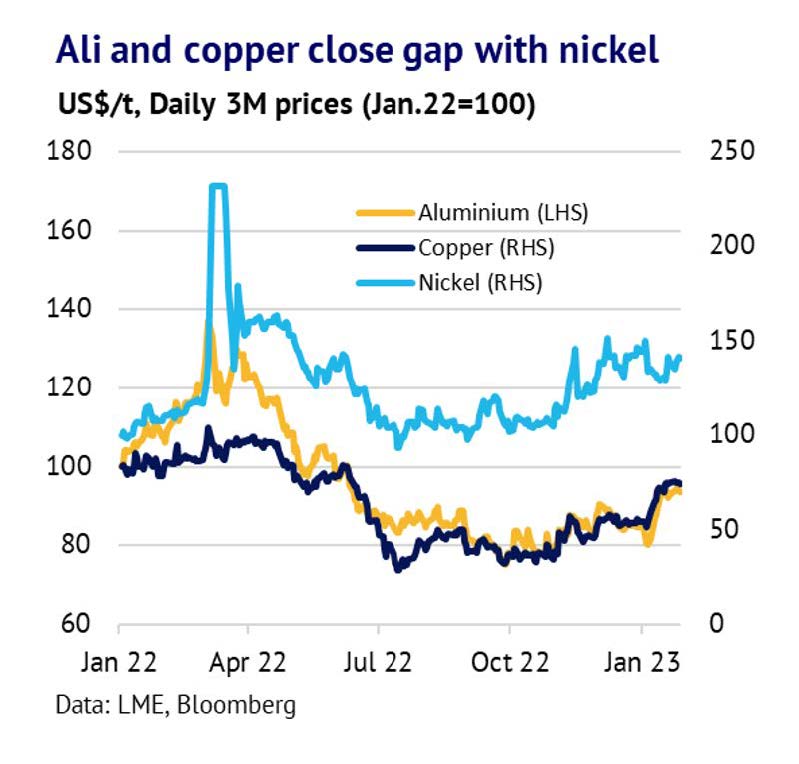
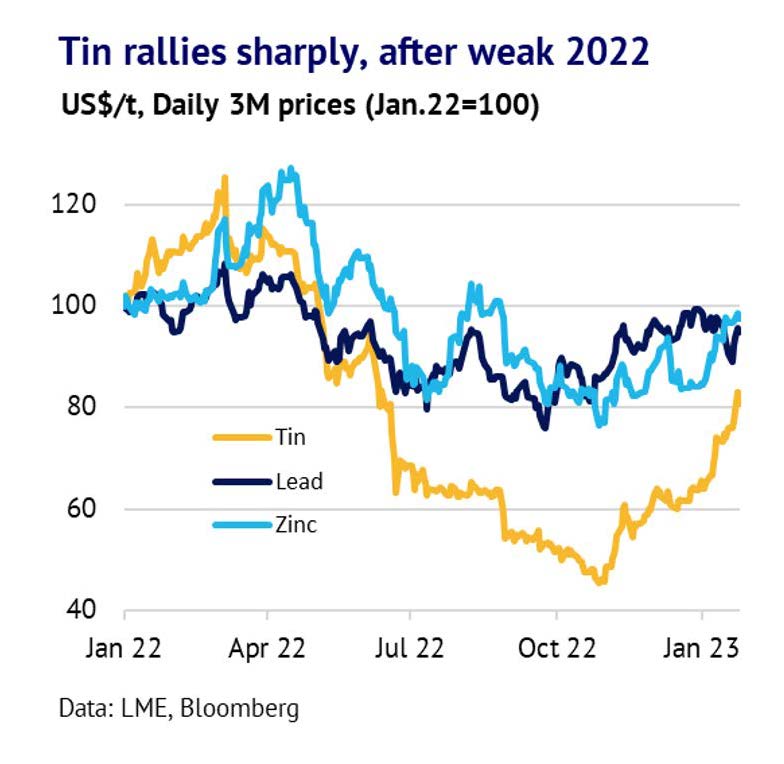
Significant weakness
Last year was a volatile one for the base metals markets. Prices across the complex were buoyant in the first four months of the year amid Russia’s invasion of Ukraine, but they fell sharply in the remainder of the year as US interest rates were hiked in response to rising inflation. Aluminium, copper, and zinc all fell by around 15% during the year, with tin down by 35%. Lead held up relatively well with prices little changed by year-end. Nickel was a notable exception and prices ended the year up 46%, This was due to a short-covering squeeze, while fundamentals were lacklustre. Other base markets were largely driven by macroeconomic and political factors, while fundamentals were of minor importance.
Ukraine invasion triggered economic slowdown
Last year saw global economic activity slow sharply and inflation surged. This was due to Russia’s invasion of Ukraine and because of supply-side challenges due to tight labour markets and COVID-19’s impact on supply chains. Global GDP fell 3% in 2020 (due to COVID lockdowns), then rose 6% in 2021, before slowing to 3.4% in 2022. CPI inflation jumped from 4.7% in 2021 to 8.8% in 2022. The IMF expects to see global GDP growth slowing to 2.9% this year, amid persistent inflation.
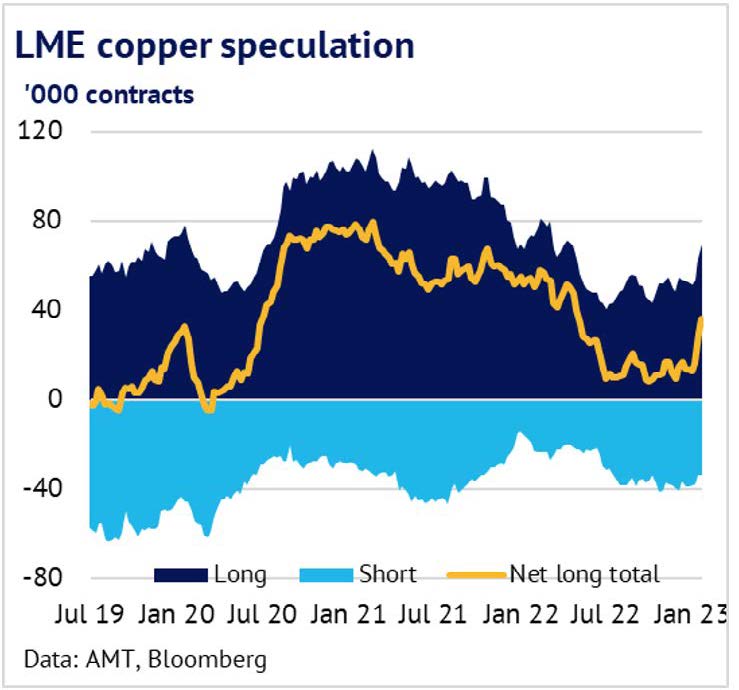
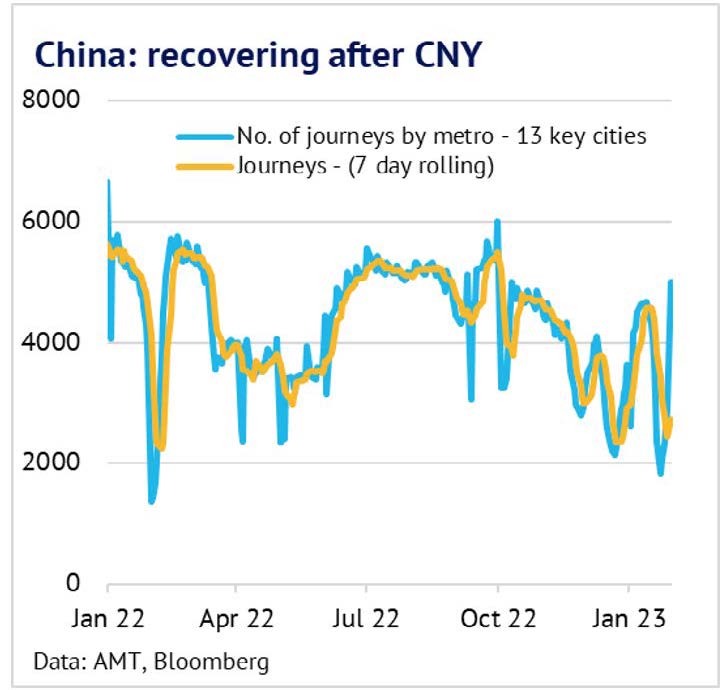
China now recovering
While the world economy looks set to slow, China is following its own path, set by COVID-19 and government stimulus measures. Last year saw severe lockdowns hampering economic activity and vaccination rates were low. When restrictions were finally lifted in late 2022, a massive wave of infections swept through China in December 2022 and January 2023. However, the country now appears to be recovering. Moreover, the Chinese government is worried about slow growth and has been stimulating the economy, with extra measures being directed at the construction/property market to boost confidence.
Copper price to rally
In terms of base metals prices and balances, we expect to see significant divergence across the complex. We are most bullish on copper for the remainder of this year. By December, we expect three-month prices to average US$11,417/t, up 30% from its 2022 average. Fundamentals will remain supportive. Production and consumption growth should both accelerate from last year and the market should remain in deficit. It also seems likely that speculative positions will keep growing from here, which will help to boost prices.
Copper supply was supposed to grow rapidly this year, but there have been numerous unexpected problems and Latin American mine output looks set to struggle, as structural problems continue to hamper producers in Chile. The COVID-19 crisis delayed progress with key projects and the government is predicting modest 2% growth for this year and has revised down its longer term forecast by 6%. Anti-government protests are also creating problems in Peru, where the large Quellaveco mine is due to boost country output by 17% this year. Furthermore, countries such as Mongolia and Panama are proving to be unpredictable sources of supply due to ongoing disputes about profit sharing between miners and governments. Copper will also get an extra boost from the green energy transition, which is helping sectors such as electrical vehicles and renewable energy.
Copper will also get an extra boost from the green energy transition
Tin likely to track copper higher
Similarly for tin we are bullish. We expect three-month prices to rally to US$33,174/t by December 2023. We predict that both supply and demand growth will accelerate this year and the market should move into deficit. In this case, the market is particularly reliant on Indonesia, which accounts for 20% of world mine supply. The government is trying to restrict refined tin exports and capture more of the value-chain by consuming more tin domestically. In addition, Peru accounts for 9% of world mine supply and anti-government protests are having an impact on major mines, including the large San Rafael operation.
Meanwhile, China has significantly boosted its imports of refined tin. Imports soared from 4.9Kt in 2021 to 31.3Kt in 2022. Given that demand was relatively weak, this suggests that speculative and strategic stockpiles have been building in the country. In the remainder of this year there is scope to draw down these stockpiles, but with LME stocks at low levels we still see a tight market as China pulls out of its recent slump.
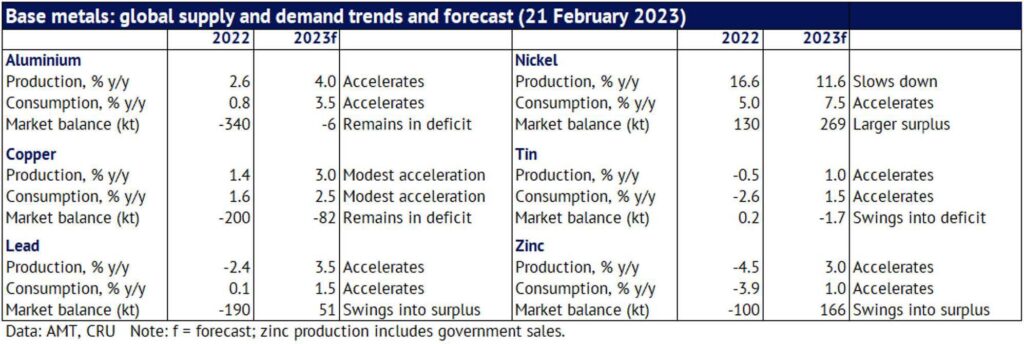

Aluminium to rally, but headwinds to come
We are also bullish on aluminium and expect the three-month price to rally to average US$2,930/t by December 2023, an 8% rally from its average in 2022. China once again proved to be a key swing factor last year and this year trade flows will inevitably be important for LME prices.
The first half of 2022 saw an unusual situation, with China exporting significant tonnages of aluminium. However, this proved to be short-lived and by December 2022 net imports decisively returned, reaching 127Kt. While the country has significant amounts of spare capacity, this is largely irrelevant because power shortages will limit the scope for restarts.
Looking ahead to the remainder of this year, we expect both consumption and production growth to accelerate and the market should be broadly balanced, with a small 6Kt deficit. In terms of consumption, we are expecting China to emerge strongly from its recent COVID-19 slump and there should be a V-shaped recovery due to strong stimulus measures, which are already in the pipeline. In terms of production, we also expect decent growth helped by some smelter restarts in Europe, as well as increased output in China. There is the potential for sales of excess inventories to dampen the price outlook, but we see this as a minor risk to our price forecast.
Lead, nickel, and zinc markets
For the remaining base metals, we expect to see prices trend lower in the remainder of this year. Lead and zinc are both expected to move into surplus from a deficit last year, helped by smelter restarts. Nickel is expected to remain in surplus for the second year running. Comparing our forecast for December 2023 with the average for 2022, we expect to see lead, nickel, and zinc prices fall by 5%, 10% and 11% respectively.
Base metals to get boost from China
One of our key assumptions is that Chinese demand will accelerate strongly in the months ahead, which should help to tighten all markets. Speculators are also likely to build long positions in many markets. Funds and fundamentals should therefore combine to create a bullish cocktail for the months ahead, with copper set to outpace its base metal peers
Article contains information taken from an article by Amalgamated Metal Trading https://amt.co.uk/base-metals-china-bounce-back-to-boost-prices/.
Please visit Amalgamated Metal Trading for more details: https://amt.co.uk/


